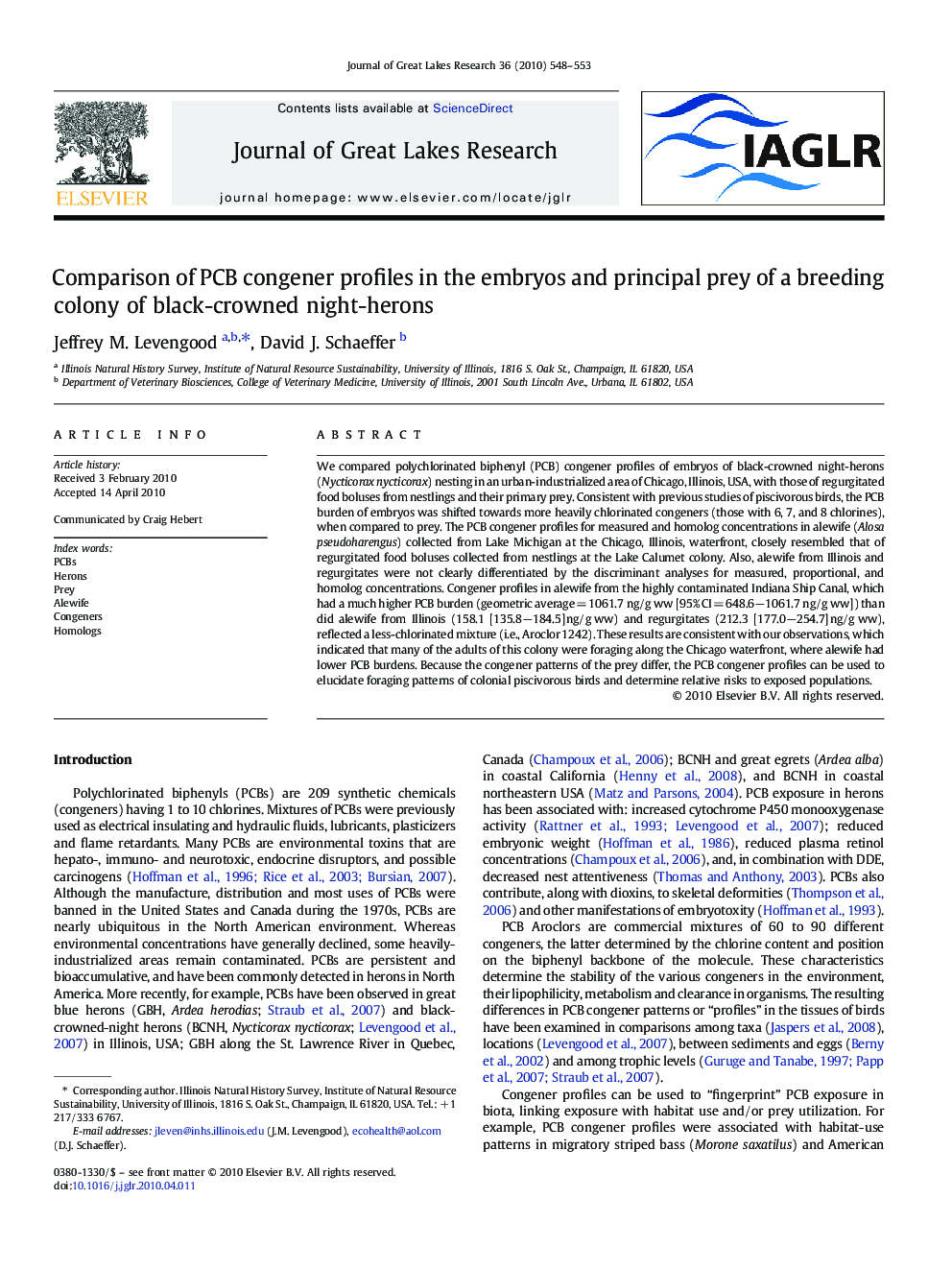| Article ID | Journal | Published Year | Pages | File Type |
|---|---|---|---|---|
| 4399104 | Journal of Great Lakes Research | 2010 | 6 Pages |
Abstract
We compared polychlorinated biphenyl (PCB) congener profiles of embryos of black-crowned night-herons (Nycticorax nycticorax) nesting in an urban-industrialized area of Chicago, Illinois, USA, with those of regurgitated food boluses from nestlings and their primary prey. Consistent with previous studies of piscivorous birds, the PCB burden of embryos was shifted towards more heavily chlorinated congeners (those with 6, 7, and 8 chlorines), when compared to prey. The PCB congener profiles for measured and homolog concentrations in alewife (Alosa pseudoharengus) collected from Lake Michigan at the Chicago, Illinois, waterfront, closely resembled that of regurgitated food boluses collected from nestlings at the Lake Calumet colony. Also, alewife from Illinois and regurgitates were not clearly differentiated by the discriminant analyses for measured, proportional, and homolog concentrations. Congener profiles in alewife from the highly contaminated Indiana Ship Canal, which had a much higher PCB burden (geometric average = 1061.7 ng/g ww [95% CI = 648.6â1061.7 ng/g ww]) than did alewife from Illinois (158.1 [135.8â184.5] ng/g ww) and regurgitates (212.3 [177.0â254.7] ng/g ww), reflected a less-chlorinated mixture (i.e., Aroclor 1242). These results are consistent with our observations, which indicated that many of the adults of this colony were foraging along the Chicago waterfront, where alewife had lower PCB burdens. Because the congener patterns of the prey differ, the PCB congener profiles can be used to elucidate foraging patterns of colonial piscivorous birds and determine relative risks to exposed populations.
Related Topics
Physical Sciences and Engineering
Earth and Planetary Sciences
Earth and Planetary Sciences (General)
Authors
Jeffrey M. Levengood, David J. Schaeffer,
